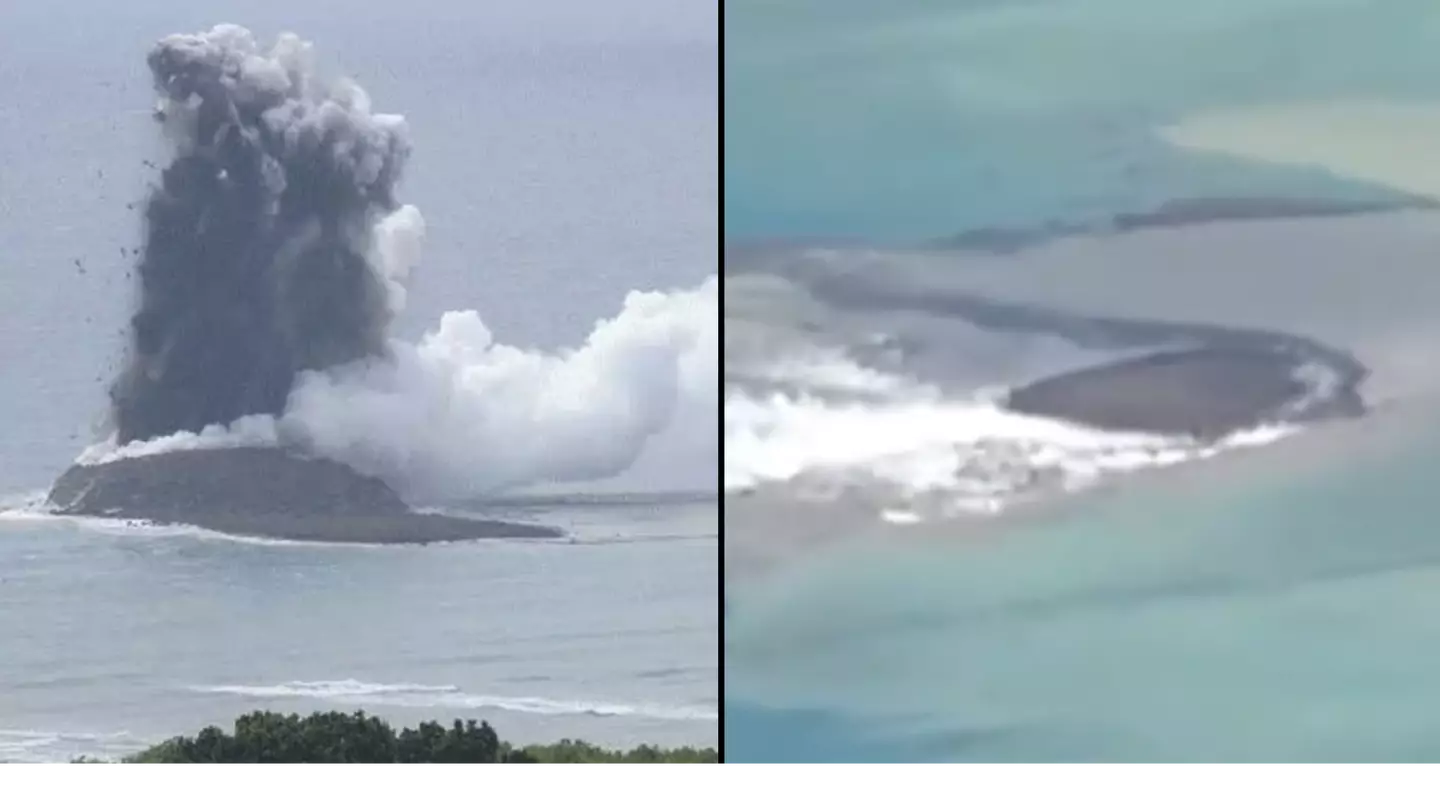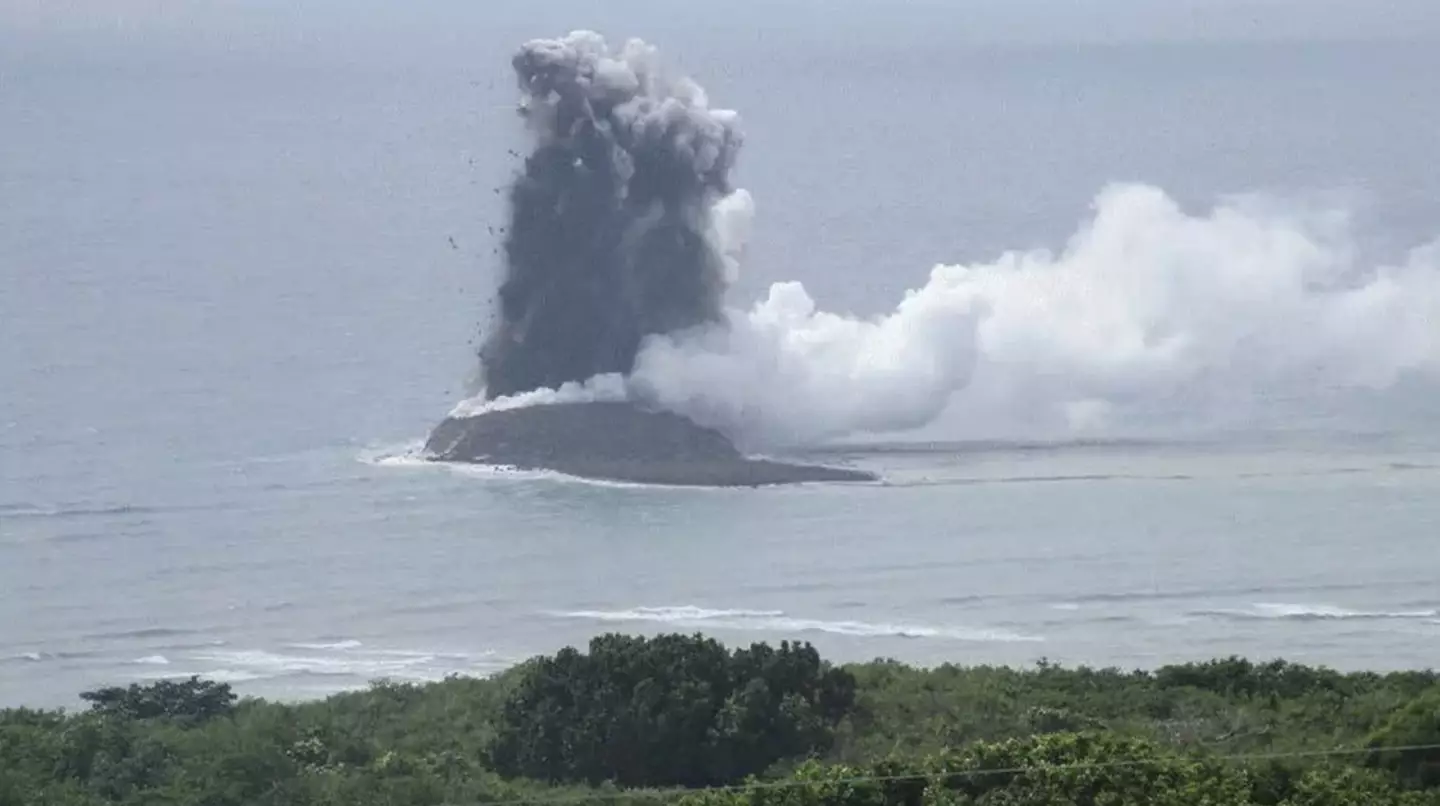
Our planet is always evolving, and now a brand new island has sprouted out of the Pacific Ocean.
The world's newest island — which is yet to be named — was formed by an undersea volcanic eruption off the coast of the Japanese island of Iwo Jima.
The island is about 100m in diameter and 20m in height.
Advert
It sits about a kilometre away from Iwo Jima and 1,200 kilometres (750 miles) south of mainland Japan.
Aerial footage from the site shows a dark cloud of ash above the tiny island, which is now part of the Ogasawara Island chain.
The University of Tokyo's Earthquake Research Institute confirmed the island-forming eruption took place on 30 October.
Experts had been tracking volcanic activity in the area since last year, with Setsuya Nakada, a professor of volcanology at the University telling The Japan Times that magma had been erupting underwater for some time and solidifying as rock below the water's surface.
Advert
But, after the eruption on 30 October, the solidified magma started to break the surface, causing the formation of the new island.
“In an earlier stage, a vertical jet of black colour, debris — which is a solidified magma — and water gushed upward,” Nakada said. “Since 3 November, the eruption started changing and the emission of volcanic ash continued explosively.”
The tiny island consists mainly of piles of pumice formed north of the eruption site. This erodes easily, with the island already having somewhat shrunk.
However, if volcanic activity continues, it could remain and even grow bigger.

Advert
Nakada said: “The areas that don't have lava could be scraped away. So if more and more lava comes out, and covers the area, I think that part will remain forever."
He is unsure whether the eruption will continue.
In other volcanic news, Italy's Campi Flegrei supervolcano has been showing increasing signs of restlessness lately, with the Italian Government planning for a possible mass evacuation of people living in the surrounding areas.
Earlier this year, more than 1,000 earthquakes were recorded under the east side of the caldera in just one month.
The Italian Government discussed evacuation plans and local authorities ran drills to make sure they were prepared for stronger earthquakes or volcanic eruptions.
Advert
Campi Flegrei is currently on yellow alert, meaning people should keep an eye on seismic activity and be prepared for potential evacuation, although scientists say there is no immediate threat of an eruption.
Topics: Science, Environment, World News, News
